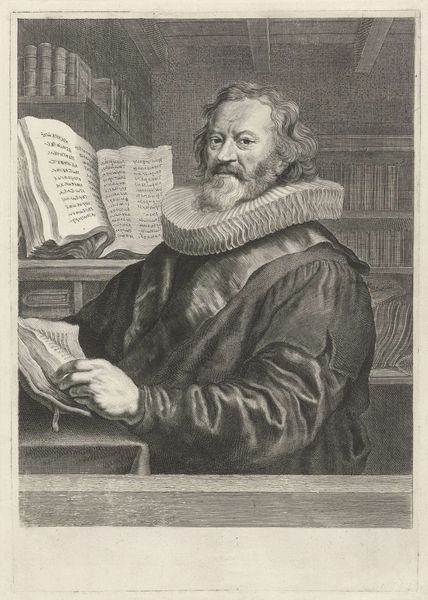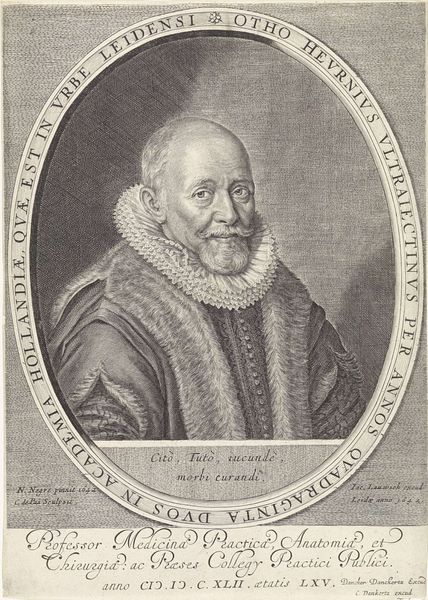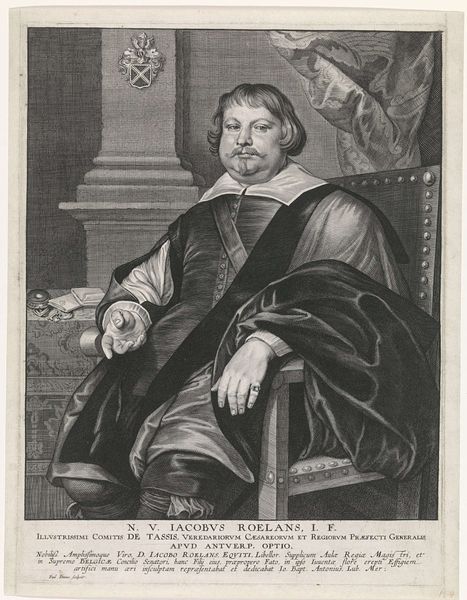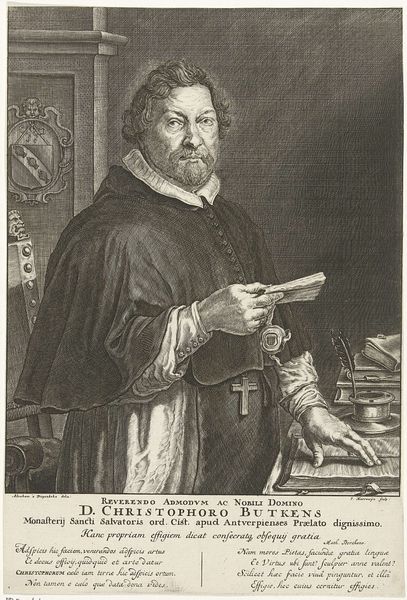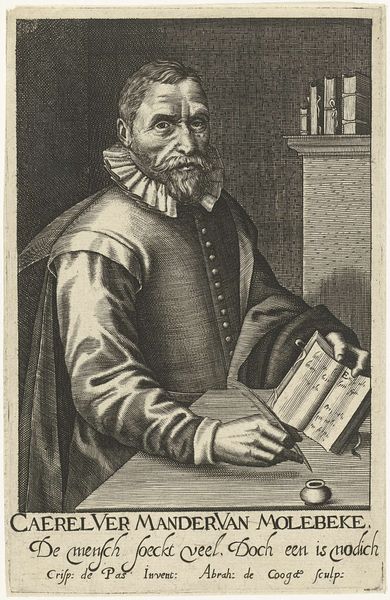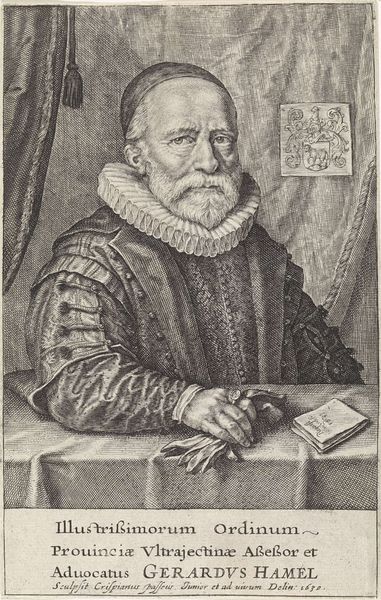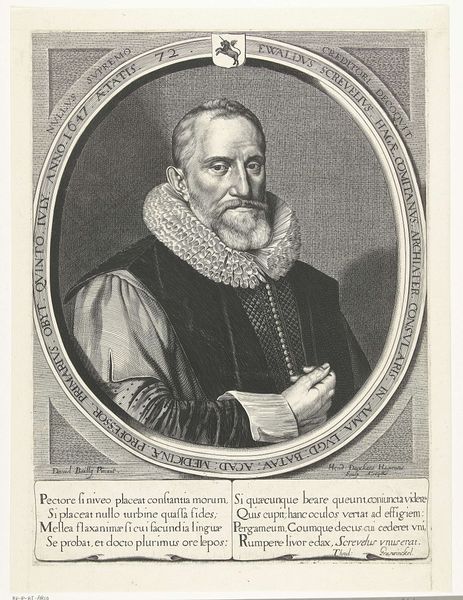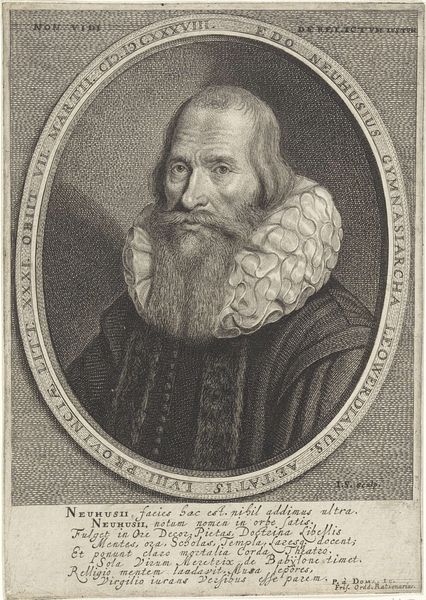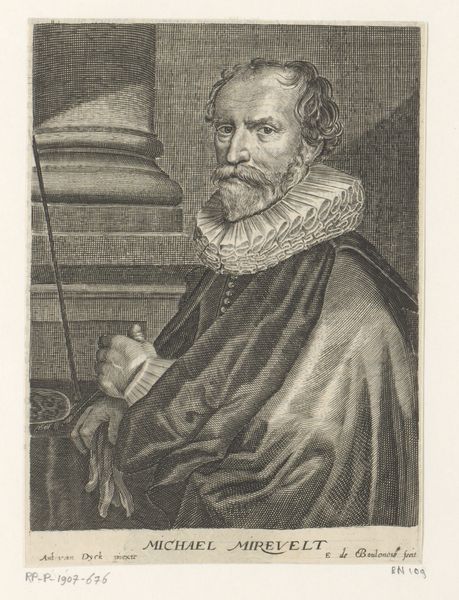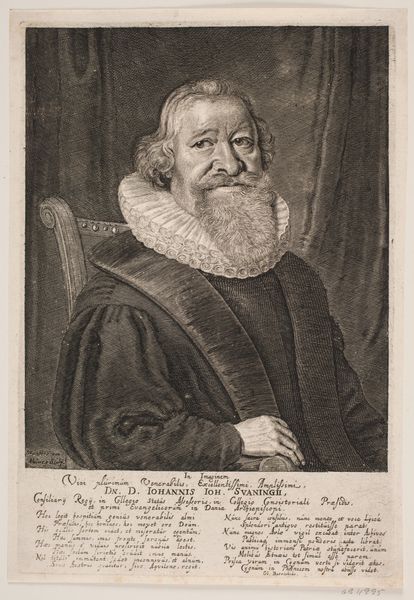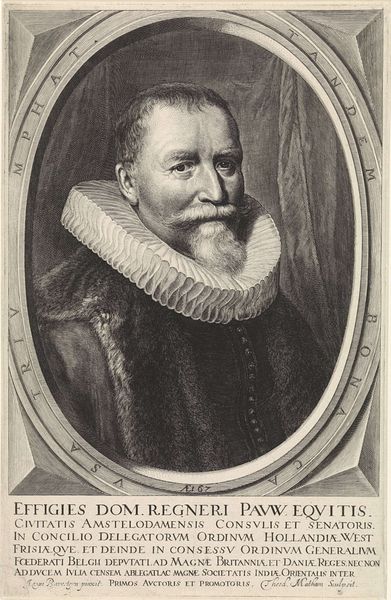
print, engraving
#
portrait
#
baroque
#
dutch-golden-age
# print
#
figuration
#
line
#
engraving
Dimensions: height 372 mm, width 278 mm
Copyright: Rijks Museum: Open Domain
Curator: This engraving, dating from sometime between 1616 and 1657, offers a fascinating depiction of Jacob Roelants as rendered by Paulus Pontius. It's currently held in the collection of the Rijksmuseum. Editor: My initial feeling? A certain austerity. The lines are so precise, so controlled, and the monochrome palette really underscores the somber tone. It's a striking image of a man weighed down by the gravity of his position. Curator: Precisely! Let's consider Roelants’s identity. During the Dutch Golden Age, societal hierarchies were visualized, reinforced through portraits. Pontius, skilled in Baroque style and engraving techniques, carefully constructs an image not only of a man but of status and power. The precise rendering reinforces not just likeness, but legitimate authority. Editor: I'm immediately drawn to the iconography surrounding him. That imposing collar, for example—a visual signifier of rank but also, in its restrictiveness, perhaps hinting at the burdens of authority. And then there's the crest, a compact symbolic claim staked at the bottom of the composition. It almost seems like Pontius anticipated an audience scrutinizing not just appearance, but also ancestry and symbolic worth. Curator: Yes, this work can be viewed through lenses of gender studies, too, questioning normative masculinities expressed through fashion and decorum in that era. Roelants' controlled gaze and posture signal authority but also invite questions about the lived experience behind that performed identity. Was the sitter aware of these symbolic messages embedded into the print itself? Editor: What strikes me is the timelessness of certain symbols—the pillar in the background, signifying strength and steadfastness, that heavy curtain, concealing some and revealing other things. These have a consistent and almost predictable effect, anchoring our understanding across centuries and cultures. Do you agree? Curator: Absolutely! It’s a continuous dialogue between what the image signifies historically and how it speaks to current sensibilities. I see that the portrait not only documents history, but also creates enduring myths. Editor: Ultimately, exploring Pontius’s rendering invites viewers to decipher both the period and its reverberations in current culture. Curator: For me, it stresses how intertwined art remains with identity politics— challenging and shifting understanding across time.
Comments
No comments
Be the first to comment and join the conversation on the ultimate creative platform.

